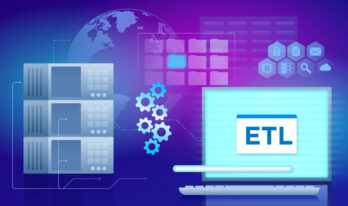Data mining and machine learning have long been compared. Many organizations claim the former to be more beneficial than the latter and vice versa. But which one is better for organizational purposes?
Both tactics have a competitive adoption rate. Data reflects that around 53% of global companies have implemented data mining. On the other hand, over 44% of small and larger organizations have adopted machine learning for commercial progression.
Let us distinguish between data mining and machine learning with cross-domain use cases.
Data Mining and Machine Learning Overview:
Data mining is a process of discovering and analyzing big datasets to detect associations that can be advantageous for organizations in understanding their target market better. On the other hand, machine learning is a method to construct models and algorithms to identify patterns in datasets.
Data mining may not be very beneficial without human intervention. Conversely, ML depends on automation and does not require human interference. Primarily, data mining and machine learning can be fruitful for companies aiming to progress in the competitive market. However, the integration procedures of both are different, which can bring diverse outcomes as well.
Use Cases of Data Mining and Machine Learning:
Retail:
Marketers employ data mining in retail primarily to identify the exact target audience in a specific region. The methodology gathers audience data and assesses it which helps not only knowing the target audience but also their needs.
Machine learning in the retail industry, on the other hand, makes it easier to understand the audience's preferences for products by evaluating the buying history. Moreover, it also helps in strengthening customer relationship management by enhancing user experience in retail.
Healthcare:
The healthcare sector leverages data mining and machine learning differently. This industry is highly competitive therefore, to stay ahead of their competitors, organizations need to understand their competitors’ strategies. Data mining assists in executing comprehensive competitor analysis with which healthcare organizations not only identify their competitors but also give enough idea about their strategies.
On the other hand, healthcare professionals utilize machine learning to analyze diseases, find appropriate medications and treatments, carry out virtual nursing, assess patient behavior, and others. Additionally, ML assists in the patient acquisition process.
Finance:
Data mining and machine learning have dissimilar significance in the finance domain. Finance companies leverage data mining for thorough risk assessment and fraudulent transaction detection.
Machine learning in finance is beneficial for investment strategies and trend assessment. Moreover, it assists in automating the financial processes together with elevating customer relations.
Both tactics are helpful for making financial predictions and investment forecasting.
Telecommunication:
Organizations operating in the telecommunication industry are majorly concerned about customer churn and failed customer retention processes. Data mining, in this regard, assists in tracking customer churn rates and evaluating the causes for the same. Alongside reducing churn, the process also simplifies several attributes of customers to adopt proper techniques for their retention.
Conversely, telecom companies use ML to streamline their workflow with predictive analysis for standard audience segmentation.
B2B:
The B2B sector is risky but can be highly profitable if all its elements are executed appropriately. However, there is a chance of encountering fraud in this commercial setup. Organizations operating in the B2B domain largely implement data mining for fraud detection and risk management, which allows such companies to eliminate barriers to success.
Conversely, B2B companies adopt ML for process improvisations. The tactic not only identifies gaps in the current process but also suggests methods to improve. ML offers suggestions depending on past data.
Wrapping Up!
Data mining and machine learning are two influential tactics for organizations operating in different domains. It is challenging to compare both and determine the best tactic. However, we can evaluate both tactics based on the use cases we mentioned above and understand how both can benefit businesses. Follow our blog updates to stay current with the latest technological advancements.
Also Read:
Decoding Data Mining Vs Machine Learning: Unveiling Distinctions
Using Data Mining Techniques Practically: An Illustrative Demonstration




